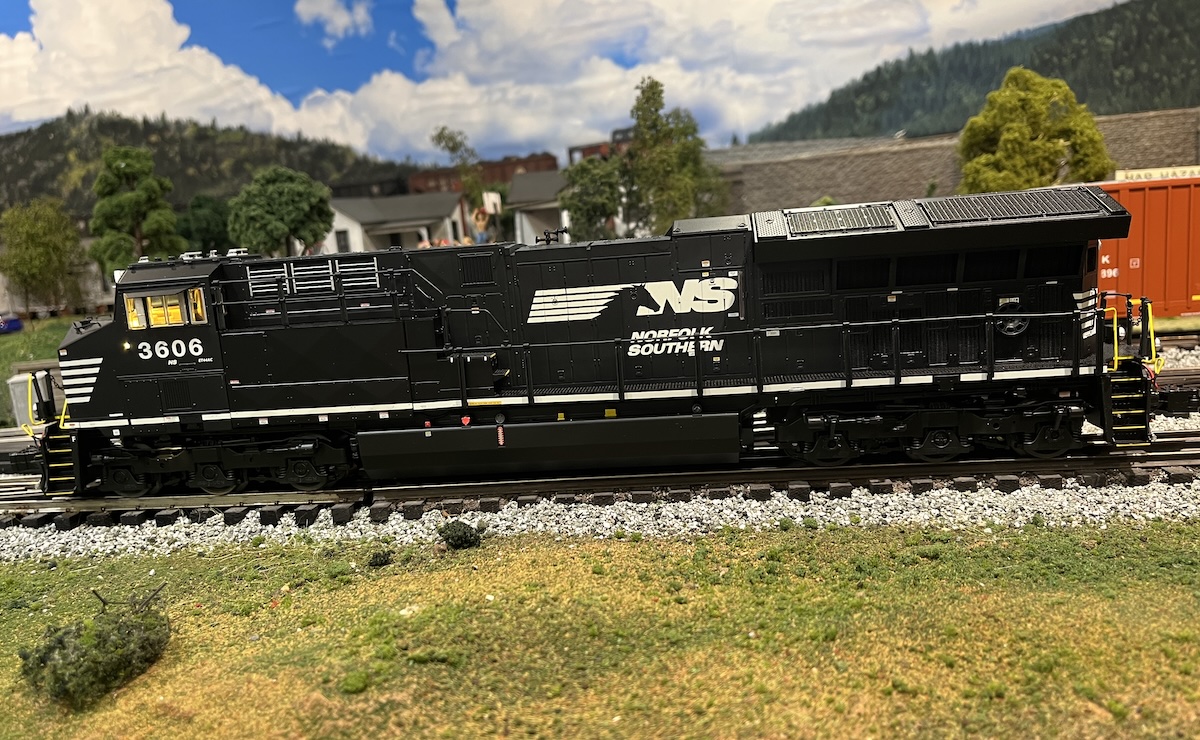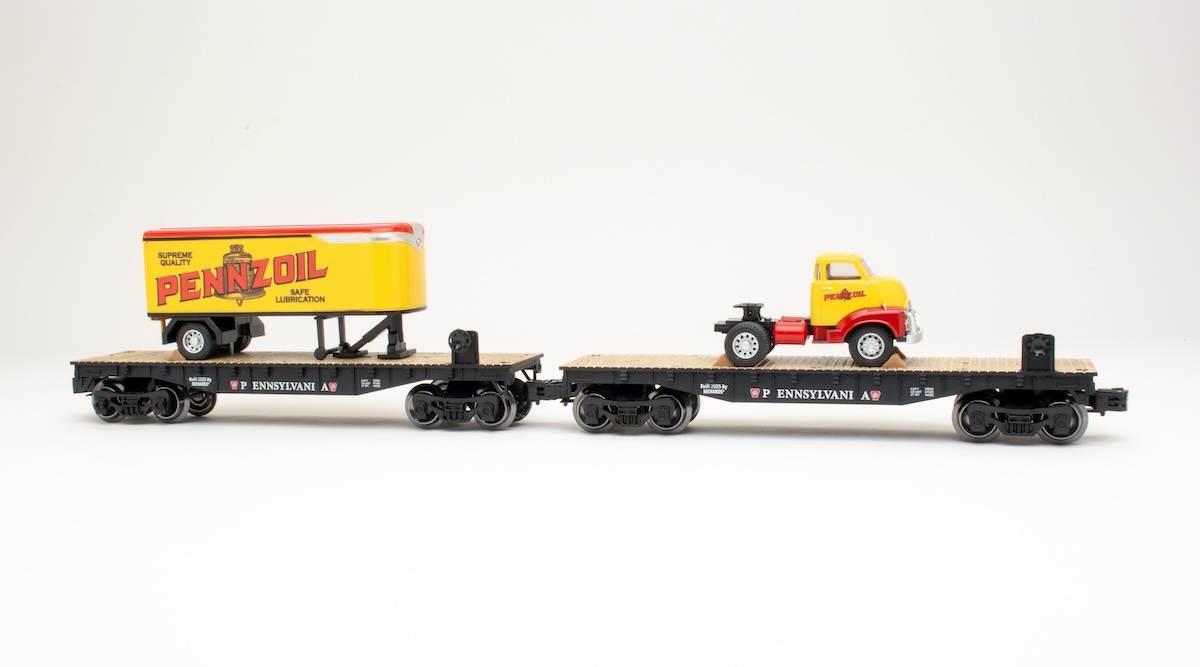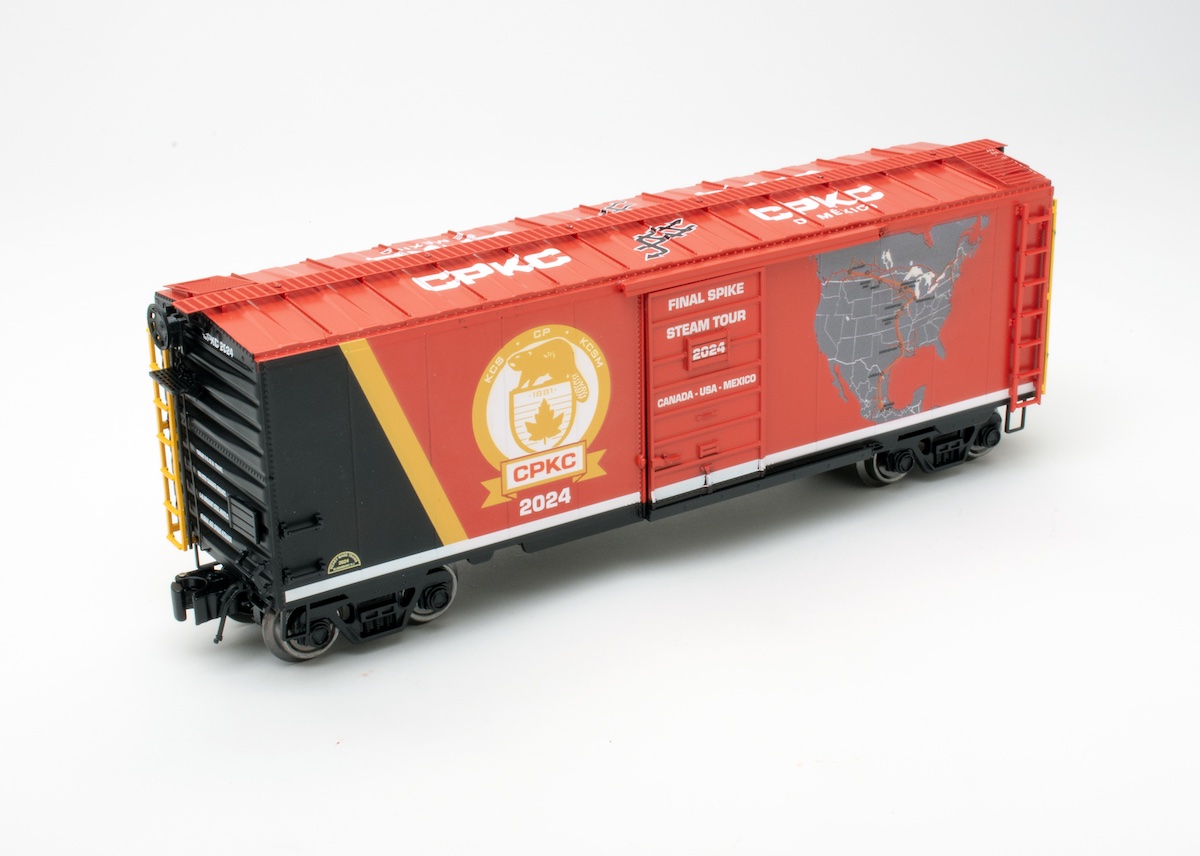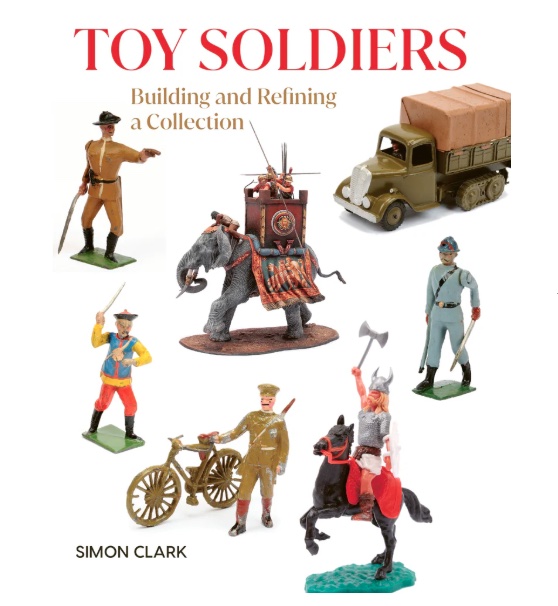The locomotives actually had four cylinders, and they featured 81-inch drive wheels and mustered, by one estimate, 3,300 horsepower. A total of 38 were erected between 1937 and 1948, and they operated into the mid-1960s on the nationalized British Rail.
Three Princess Coronation-class locomotives have been preserved: the City of Birmingham, the Duchess of Hamilton, and the Duchess of Sutherland. In recent years the Hamilton and Sutherland have been run on the excursion circuit.
Opening the box
On the European railways front, MTH has been doing some spectacular things. MTH’s designers were a bit more challenged with this model – simply because the real locomotive conformed to standard British practices, favoring very clean, clutter-free boilers.
The pilot is great. It appears industrial looking and vaguely dangerous to O gauge railway men, what with the dangling link coupler, square edges, and big old buffers (all the better to squish you with!).
The surface of the pilot is smooth (as are the running boards – save for rivets along the outer edge). The pilot deck mounts the classification lamps. I was happy to see that these actually look like lamps, not little squares with a light inside. Nestled against the front deck is a small LMS builder’s plate.
You’ll find assorted steps and appliances mounted next to the deck of the running boards.
The smokebox has rivet and hinge detail, handles for opening the box door, and a grab iron above the locomotive number. The smokebox itself is painted black.
The boiler lacks the clutter found on an American locomotive (and it makes you wonder where the Brits hid all that stuff). There are rivets and seams in the appropriate places, and the boiler bands are marked with red and black lining. This looks very sharp!
There are handrails running along the sides of the boiler. Up top, near the start of the cab roof, you’ll find a whistle and four pop-off valves.
The cab roof has a neat two-piece hatch that allows you some options in positioning it open or closed. Inside the cab you’ll find a decorated firebox backhead, windows with plastic panes, and two standing crew figures.
When connecting the wireless drawbar, be sure to lift the engine deck to be on top of the tender’s deck, lest the fireman have a terrible on-the-job accident.
The spoked wheels and running gear are all chemically darkened for a more realistic appearance.
In motion – at high or low speeds – the gear still manages to put up a neat show of syncopation!
The tender is a three-axle model. The LMS prototype could carry 10 tons of coal and 4,000 gallons of water. The front deck plate has a safety tread pattern and cast-in detail on the front of the tender. The coal load is made up of separately applied chunks.
The tender’s rear deck has some piping, and the spout for the water has a hinged top. The rear has a ladder, vacuum brake line, and buffers. The tender has a coil coupler, but there are options for installing either a Kadee scale coupler or an Ace Trains-style coupler on the tender.
The model has two power pickup rollers, both on the locomotive and about 3½ inches apart.
On the test track
Operation was exceptionally smooth in all speed ranges.
Our command-mode low-speed average was 1.8 scale miles per hour, and the conventional-mode low-speed average was 2.1 scale miles per hour. The high-speed average was 72.7 scale miles per hour.
Drawbar pull was 1 pound, 8 ounces.
The smoke unit flows into a twin-chimney stack, and it really pumps out the white stuff.
The sound and smoke unit controls are beneath the tender, as are the two-to-three-rail polarity controls and battery charger socket.
The sound system delivered the robust sound of a steam locomotive. I was surprised in that I was expecting a high-pitched steam whistle, but it was actually a deep-sounding tone that evoked a riverboat whistle.
I was able to discover quite a few videos of Coronation-class locomotives on youtube.com and confirmed the deep sound of the whistle.
If you have a fleet of UK-outline O gauge rolling stock, you may want to consider changing out the rear coupler. Otherwise, the coil coupler functioned well.
Price: $1,199.95 (no. 20-3368-2)
Features: O-42 operation, die-cast metal construction, can-style motor, ProtoSound 2.0, and a coil coupler (link coupler included)














